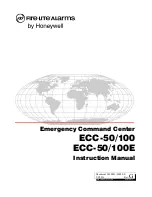
Additional information – Ray60
The following additional information is required for
completing a license application in Canada and the US.
Industry Canada
certification number
4069B-RAY60D
FCC ID
PJ5–RAY60
FCC Type accepted
Parts 2, 15 and 80
Output power
1 watt (low) and 25 watt (high)
Modulation
FM
Frequency range
155.500 MHz to 163.275 MHz
Additional information – Ray70
The following additional information is required for
completing a license application in Canada and the US.
Industry Canada
certification number
4069B-RAY70D
FCC ID
PJ5–RAY70
FCC Type accepted
Parts 2, 15 and 80
Output power
1 watt (low) and 25 watt (high)
Modulation
FM
Frequency range
155.500 MHz to 163.275 MHz
Maritime Mobile Service Identity (MMSI)
This product is a class “D” Digital Selective Calling
(DSC) device.
A 9 digit MMSI number is required to operate DSC
equipment. In some areas, a radio operator license is
required before an MMSI number can be issued.
Note:
You can request an MMSI number from the
same agency that issues radio or ship radio licenses
in your area. Once obtained, you can program the
MMSI number into your product by following the
instruction supplied with the product.
Once obtained, you can program the MMSI number into
your product using the instructions provided.
If regulations in your area do not permit you to program
the MMSI number yourself, your Raymarine dealer can
program the number for you.
Obtaining an MMSI number in the United States
You can request an MMSI number from the FCC when
you apply for a Station License. If your vessel does
not require a license, you may obtain an MMSI by
contacting BoatUS
www.boatus.com
.
Obtaining an MMSI number in Canada
You can obtain an MMSI number from your nearest
Industry Canada Office.
Obtaining an MMSI number in Europe and rest of
world
Am MMSI number should be requested from the same
agency that issues radio operator licenses in your area.
Automatic Transmitter Identification
System (ATIS)
Your product includes ATIS functionality for use on the
inland waterways of contracting governments of the
“Regional Arrangement on the Radiocommunication
Service for Inland Waterways”
— also known as
“RAINWAT”
.
ATIS adds data at the end of radio transmissions that
identifies your station. ATIS operation can be turned on
or off as needed via the radio’s menu.
An ATIS ID can be obtained from the same agency that
issues radio operator licenses in your area.
Your ATIS ID should be programed into your product
using the instructions provided.
Note:
Contracting RAINWAT countries include:
Austria, Belgium, Bulgaria, Croatia, the Czech
Republic, France, Germany, Hungary, Luxembourg,
Moldova, Montenegro, the Netherlands, Poland,
Romania, Serbia, the Slovak Republic and
Switzerland.
Note:
When ATIS is enabled, certain programing
steps have been implemented to protect the integrity
of the RAINWAT agreement, including the blocking
of DSC functions when ATIS is enabled.
EMC installation guidelines
Raymarine equipment and accessories conform to
the appropriate Electromagnetic Compatibility (EMC)
regulations, to minimize electromagnetic interference
between equipment and minimize the effect such
interference could have on the performance of your
system
Correct installation is required to ensure that EMC
performance is not compromised.
Note:
In areas of extreme EMC interference,
some slight interference may be noticed on the
product. Where this occurs the product and the
source of the interference should be separated by
a greater distance.
For
optimum
EMC performance we recommend that
wherever possible:
• Raymarine equipment and cables connected to it are:
– At least 1 m (3 ft) from any equipment transmitting
or cables carrying radio signals e.g. VHF radios,
cables and antennas. In the case of SSB radios,
the distance should be increased to 7 ft (2 m).
– More than 2 m (7 ft) from the path of a radar beam.
A radar beam can normally be assumed to spread
20 degrees above and below the radiating element.
• The product is supplied from a separate battery from
that used for engine start. This is important to prevent
erratic behavior and data loss which can occur if the
engine start does not have a separate battery.
• Raymarine specified cables are used.
• Cables are not cut or extended, unless doing so is
detailed in the installation manual.
6
Ray52 / Ray50 / Ray60 / Ray70







































